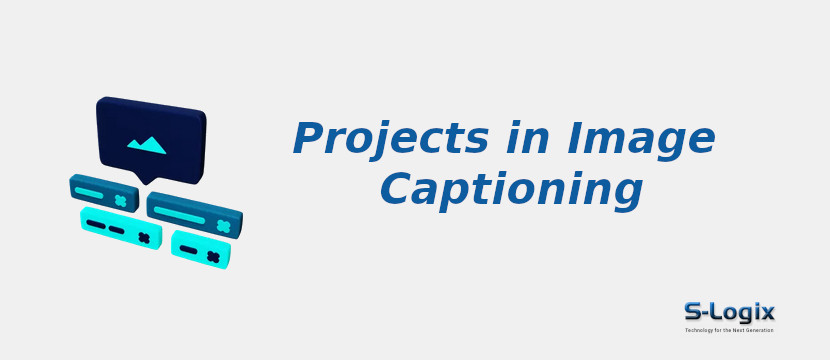Project Background:Image Captioning centers on bridging the gap between computer vision and natural language processing (NLP) by automatically generating descriptive captions for images. With the explosive growth of image data on the internet and social media platforms, there is a pressing need for algorithms capable of understanding and interpreting visual content human-likely. Image captioning aims to tackle this challenge by leveraging deep learning architectures to analyze the visual features of images and generate corresponding textual descriptions. This interdisciplinary field draws on techniques from computer vision, such as convolutional neural networks (CNNs) for image feature extraction and NLP, including recurrent neural networks (RNNs) and transformers for language modeling and sequence generation. The ultimate goal of image captioning projects is to develop models that can accurately and fluently describe the content of images, enabling applications such as assistive technologies for visually impaired individuals, content understanding for search engines, and enhanced user experiences in multimedia applications.
Problem Statement
- Bridging the semantic gap between visual content and textual descriptions requires algorithms to effectively understand and interpret the visual information in images and generate corresponding natural language descriptions.
- Images can contain diverse objects, scenes, and contextual information, posing challenges in accurately identifying and describing the relevant visual elements within the image.
- Describing images involves ambiguity and subjectivity, as different individuals may interpret the same visual content differently, requiring algorithms to generate accurate and diverse captions.
- Generating captions that capture the context and relationships between objects and scenes within the image and considering broader contextual information such as cultural and societal norms.
- Ensuring that generated captions are fluent, coherent, and linguistically appropriate requires algorithms to model complex language structures and generate grammatically correct and contextually relevant text.
- Leveraging large-scale image-caption pairs for training deep learning models while ensuring efficient utilization of computational resources and minimizing data annotation efforts.
- Establishing robust evaluation metrics and benchmarks for assessing the quality and performance of image captioning algorithms, considering factors such as caption relevance, diversity, and fluency.
- Integrating information from visual and textual modalities effectively, leveraging features extracted from images and textual embeddings to generate accurate and contextually relevant captions.
Aim and Objectives
- Develop effective algorithms for generating descriptive captions for images.
- Extract meaningful visual features from images using deep learning models.
- Develop language models capable of generating coherent and contextually relevant captions.
- Explore techniques for aligning visual and textual information to bridge the semantic gap.
- Improve diversity and fluency in generated captions through novel generation strategies.
- Evaluate the performance of image captioning algorithms using robust metrics and benchmarks.
Contributions to Image Captioning
- Providing algorithms capable of automatically generating descriptive captions for images, facilitating deeper understanding and interpretation of visual content.
- Enabling assistive technologies for visually impaired individuals by providing textual descriptions of images, enhancing accessibility to digital content.
- Enhancing multimedia applications and search engines by enabling more intuitive and informative content understanding through image captions.
- Advancing cross-modal integration between computer vision and natural language processing, bridging the semantic gap between visual and textual information.
- Contributing to advancements in deep learning techniques for multimodal learning and language generation, with applications beyond image captioning in areas such as multimodal translation and content understanding.
Deep Learning Algorithms for Image Captioning
- Convolutional Neural Networks (CNNs)
-
Recurrent Neural Networks (RNNs)
-
Long Short-Term Memory (LSTM) networks
-
Gated Recurrent Units (GRUs)
-
Transformer-based models
-
Attention Mechanisms
-
Encoder-Decoder Architectures
-
Show, Attend, and Tell (SAT) models
-
Neural Image Caption (NIC) models
-
Transformer-based Encoder-Decoder (TED) models
Datasets for Image Captioning
- MSCOCO (Microsoft Common Objects in Context)
-
Flickr30k
-
Visual Genome
-
Conceptual Captions
-
Pascal Sentence Dataset
-
SBU Captioned Photo Dataset
-
COCO Captions
-
Visual7W
-
Flickr8k
-
SUN Attribute Dataset
Software Tools and Technologies:
Operating System: Ubuntu 18.04 LTS 64bit / Windows 10
Development Tools: Anaconda3, Spyder 5.0, Jupyter Notebook
Language Version: Python 3.9
Python Libraries:
1. Python ML Libraries:
- Scikit-Learn
- Numpy
- Pandas
- Matplotlib
- Seaborn
- Docker
- MLflow
2. Deep Learning Frameworks:
- Keras
- TensorFlow
- PyTorch
